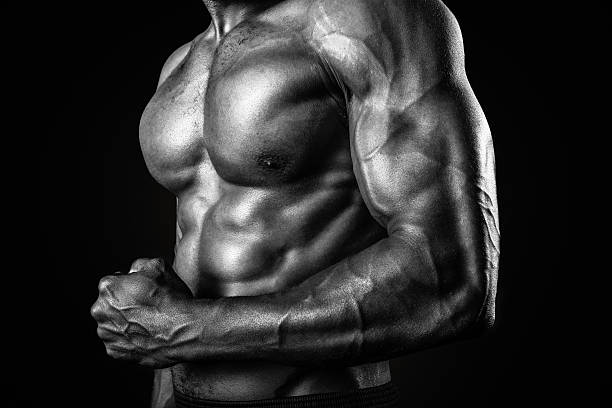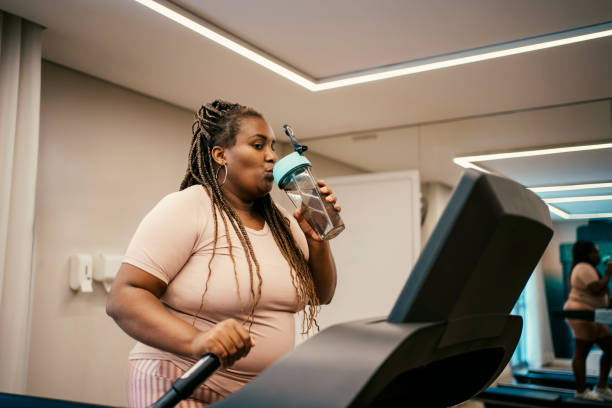(BlackFitness101.com) Bodybuilding is much more than just lifting weights and eating right; it’s a lifestyle that demands discipline, dedication, and a strategic approach. For those of you looking to dominate the stage at your next competition, it’s crucial to understand that success isn’t just about the time you spend in the gym. It’s about every single aspect of your life, from your training regimen to your diet, your recovery routine, and your mental toughness. In this article, I’ll share with you the top 7 bodybuilding tips to help you win a competition, drawing from both science and my own experience as a fitness trainer.

1. Master the Basics of Nutrition
When it comes to bodybuilding, nutrition is the foundation upon which everything else is built. You can have the best training program in the world, but without the right nutrition, your progress will be limited. The first step to mastering bodybuilding nutrition is understanding macronutrients—protein, carbohydrates, and fats.
- Protein: Protein is the building block of muscle, and in bodybuilding, your protein intake is critical. Aim for 1.0 to 1.5 grams of protein per pound of body weight. Lean sources of protein such as chicken breast, turkey, fish, eggs, and whey protein should be staples in your diet.
- Carbohydrates: Carbs are your body’s primary source of energy, and they are especially important during intense training periods. Complex carbohydrates like sweet potatoes, brown rice, oats, and quinoa should be consumed to fuel your workouts and aid in recovery.
- Fats: Healthy fats are essential for hormone production, including testosterone, which plays a key role in muscle growth. Incorporate sources of healthy fats such as avocados, nuts, seeds, and olive oil into your diet.
Meal timing is also important. Consuming protein and carbohydrates immediately after a workout can help maximize muscle recovery and growth. Additionally, some competitors find that eating smaller, more frequent meals throughout the day (every 3-4 hours) helps keep their metabolism running efficiently and provides a steady stream of nutrients to their muscles.
2. Periodize Your Training
Training periodization is one of the most effective strategies in bodybuilding. Periodization involves dividing your training into distinct phases, each with its specific goals and training methods. The three main phases are:
- Hypertrophy Phase: This phase focuses on muscle growth and typically involves higher reps (8-12 per set) with moderate to heavy weights. The goal is to maximize muscle size, which is critical for bodybuilding competitions.
- Strength Phase: During this phase, you’ll focus on increasing your strength by lifting heavier weights with lower reps (3-6 per set). Building strength not only helps you lift heavier in the hypertrophy phase but also helps you maintain muscle mass during the cutting phase.
- Cutting/Peaking Phase: As you get closer to the competition, the focus shifts to cutting body fat while preserving as much muscle mass as possible. This phase involves higher reps, lower weights, and more cardio to help achieve a shredded, competition-ready physique.
Periodization allows you to strategically overload your muscles, ensuring consistent progress and minimizing the risk of injury or burnout. Remember to cycle through these phases throughout the year, aligning your peak condition with your competition date.
3. Focus on Compound Movements
While isolation exercises (like bicep curls and leg extensions) have their place in a bodybuilding routine, compound movements should be the cornerstone of your training program. Compound exercises involve multiple muscle groups and joints, allowing you to lift heavier weights and stimulate more muscle fibers.
Key compound exercises include:
- Squats: Squats are a powerhouse movement that works the quads, hamstrings, glutes, and core. Mastering the squat and incorporating variations like front squats and sumo squats can help build massive leg and core strength.
- Deadlifts: Deadlifts target the entire posterior chain, including the hamstrings, glutes, lower back, and traps. They are essential for building overall strength and thickness in the back.
- Bench Press: The bench press is a staple for developing the chest, shoulders, and triceps. Incorporate variations like incline and decline bench presses to target different parts of the chest.
- Pull-Ups/Chin-Ups: These are excellent for developing the lats, biceps, and upper back. If you can’t perform pull-ups with your body weight, start with assisted pull-ups and gradually work your way up.
- Overhead Press: The overhead press is crucial for building strong, well-rounded shoulders and also engages the core.
Incorporating these compound movements into your routine will ensure that you build a balanced, symmetrical physique, which is essential for winning bodybuilding competitions.
4. Dial in Your Cardio Routine
Cardio is a crucial component of a bodybuilding competition prep, especially during the cutting phase. The goal of cardio is to help you burn excess body fat while preserving muscle mass. The type, frequency, and duration of cardio will depend on your individual goals and how your body responds to it.
- Low-Intensity Steady State (LISS) Cardio: This involves performing cardio at a steady pace for an extended period (30-60 minutes). LISS is less taxing on the body and is often used during the cutting phase to avoid muscle loss.
- High-Intensity Interval Training (HIIT): HIIT involves short bursts of intense exercise followed by periods of rest. This form of cardio is highly effective for burning fat in a shorter amount of time and can be particularly useful if you’re short on time.
- Fasted Cardio: Some bodybuilders swear by fasted cardio, performed in the morning before eating. The theory is that your body will burn fat as its primary fuel source. However, this approach should be used with caution, as it may lead to muscle loss if not done correctly.
Finding the right balance between cardio and weight training is key. Too much cardio can lead to muscle loss, while too little can prevent you from achieving the lean, ripped look needed for competition.
5. Perfect Your Posing Routine
Posing is an often-overlooked aspect of bodybuilding, but it’s one of the most critical elements in a competition. No matter how great your physique is, if you don’t know how to showcase it properly, you won’t be able to maximize your score.
- Practice Regularly: Start practicing your posing routine well in advance of your competition. Posing requires muscle control, endurance, and confidence. Regular practice will help you build the stamina needed to hold poses for extended periods and allow you to identify and correct any weak points.
- Work with a Coach: If possible, work with a posing coach who can provide expert guidance on how to best display your physique. They can also help with transitions between poses and the overall flow of your routine.
- Focus on Symmetry and Proportion: Judges look for balance, symmetry, and proportion, so your posing routine should highlight your strengths and minimize any weaknesses. For example, if you have a strong upper body but slightly weaker legs, make sure your posing emphasizes your upper body while downplaying your legs.
- Stage Presence: Confidence is key. Your posing routine should not only show off your muscles but also convey your confidence and stage presence. Practice smiling, maintaining eye contact with the judges, and moving smoothly between poses.
A well-rehearsed posing routine can be the difference between winning and losing, so take it as seriously as your training and nutrition.
6. Prioritize Rest and Recovery
Rest and recovery are just as important as your training and nutrition. Your muscles don’t grow in the gym; they grow during rest. Here’s how to optimize your recovery:
- Sleep: Aim for 7-9 hours of quality sleep each night. Sleep is when your body repairs and rebuilds muscle tissue, and it’s also when your hormones (like testosterone and growth hormone) are at their peak production. Lack of sleep can hinder your recovery, reduce your performance, and increase the risk of injury.
- Active Recovery: Incorporate active recovery days into your routine. This could include light cardio, stretching, or yoga. Active recovery helps increase blood flow to the muscles, which can reduce soreness and speed up recovery.
- Massage and Foam Rolling: Regular massages and foam rolling can help alleviate muscle soreness, improve flexibility, and prevent injuries. Foam rolling before and after workouts can also help improve muscle function and range of motion.
- Nutrition for Recovery: Post-workout nutrition is crucial. Consuming a meal rich in protein and carbohydrates within 30 minutes to an hour after your workout can help kickstart the recovery process. Additionally, staying hydrated is essential for recovery, as dehydration can lead to muscle cramps and impaired performance.
- Supplements: Consider incorporating supplements like BCAAs (branched-chain amino acids) and glutamine into your routine. These can help reduce muscle soreness, enhance recovery, and support muscle growth.
Remember, overtraining can be just as detrimental as undertraining. Listen to your body, and don’t be afraid to take a rest day if you feel overly fatigued or sore.
7. Develop a Winning Mindset
Your mindset is one of the most powerful tools you have in bodybuilding. Winning a competition isn’t just about physical strength; it’s about mental toughness, discipline, and perseverance.
- Goal Setting: Set clear, achievable goals for your bodybuilding journey. These could be short-term goals, like increasing your bench press by 10 pounds, or long-term goals, like winning a specific competition. Having goals gives you something to strive for and keeps you motivated.
- Visualization: Visualization is a powerful tool used by many successful athletes. Spend time each day visualizing yourself on stage, performing your posing routine perfectly, and winning the competition. This mental practice can help boost your confidence and improve your performance.
- Stay Positive: Bodybuilding is a journey with ups and downs. There will be days when you feel tired, unmotivated, or frustrated by your progress. It’s important to stay positive and keep pushing forward, even when things get tough. Surround yourself with supportive people who encourage you to reach your goals.
- Discipline and Consistency: Success in bodybuilding comes from discipline and consistency. It’s not about being perfect; it’s about showing up every day, putting in the work, and making small, consistent improvements. Over time, these small improvements will add up to significant progress.
- Embrace the Challenge: Bodybuilding is one of the most challenging sports out there, both physically and mentally. Embrace the challenge, and use it as an opportunity to push your limits and see what you’re truly capable of.
Winning a bodybuilding competition requires more than just lifting weights; it demands a holistic approach that encompasses nutrition, training, posing, recovery, and mindset. By mastering these seven tips, you’ll be well on your way to stepping on stage with confidence and bringing home the trophy.
Remember, bodybuilding is a marathon, not a sprint. Be patient, stay focused, and trust the process. With hard work, dedication, and the right strategies, you can achieve your bodybuilding goals and dominate the competition.
Whether you’re a seasoned competitor or stepping on stage for the first time, these tips will help you prepare, perform, and succeed at your next bodybuilding competition. So, get to work, and remember—every rep, every meal, and every decision you make brings you one step closer to victory.
Staff Writer; Leroy Smith
Questions? Feel free to email me at; LSmith@BlackFitness101.com.












Leave a Reply